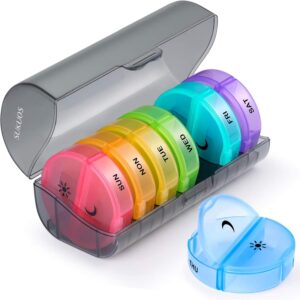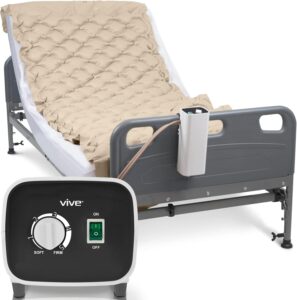Contents
- 1 Managing Chronic Conditions
- 2 Medication Management and Adherence Strategies
- 3 Monitoring Vital Signs and Symptoms
- 4 Adapting the Home Environment
- 5 Pain Management Techniques
- 6 Wound Care and Pressure Sore Prevention
- 7 Enhancing Quality of Life
- 8 Promoting Social Engagement and Reducing Isolation
- 9 Supporting Hobbies and Meaningful Activities
- 10 Addressing Sensory Impairments
- 11 Maintaining Personal Hygiene and Grooming
- 12 Navigating End-of-Life Care
- 13 Discussing Advance Directives and Healthcare Wishes
- 14 Palliative Care Options
- 15 Supporting Emotional and Spiritual Needs
- 16 Leveraging Technology in Caregiving
- 17 Telemedicine and Remote Monitoring
- 18 Smart Home Devices
- 19 Mobile Apps and Wearables
- 20 Conclusion
Managing Chronic Conditions
Let me tell you something – after 27 years of nursing, I’ve learned that managing chronic conditions is like juggling while walking a tightrope. You’ve got to keep all these balls in the air without losing your balance!
Medication Management and Adherence Strategies
Do you know what opened my eyes? Working with Mrs. Martinez, who was taking 12 different medications at different times. Talk about complicated! We transformed her system with some simple tricks that made a huge difference.

First, we got her one of those fancy pill organizers – but here’s the kicker – we colour-coded everything! Morning meds got blue stickers, evening ones got yellow. Sounds simple, right? But man, what a game-changer! Her adherence went from about 60% to nearly perfect in just two weeks.
Here’s what I’ve found works best:
– Set up phone alarms (I like the ones that don’t stop until you respond)

– Keep a medication diary – trust me, it’s worth the hassle

– Use timer caps on pill bottles (they’re like tiny stopwatches that show when you last opened the bottle)
– Store medications in a consistent, visible place
Monitoring Vital Signs and Symptoms
Okay, here’s where I messed up once – I had a patient who was monitoring his blood pressure but writing it down on random pieces of paper. What a nightmare that was! Now I always set up a simple tracking system right from the get-go.

Pro tip: Get a digital blood pressure monitor that connects to your phone. They’re not cheap, but boy, do they make life easier! The data goes straight to an app, and you can share it with your doctor without playing the “Where did I put that paper?” game.
Speaking of tracking symptoms:
– Keep a simple journal (nothing fancy – just date, time, and what’s happening)
– Take photos of any visible changes (game-changer for wound monitoring!)
– Use a scale of 1-10 for pain or discomfort levels
– Note any triggers or patterns you notice
Adapting the Home Environment
Let me share a story that taught me a big lesson. I had a client who insisted their house was “perfectly safe” – until we did a walk-through together and found 23 potential fall hazards! Now I always do a room-by-room safety audit.
Essential modifications I always recommend:
– Install grab bars in the bathroom (and don’t skimp on installation – get a pro!)
– Remove those pesky throw rugs (I don’t care how pretty they are)
– Add motion-sensor lights (especially for nighttime bathroom trips)
– Rearrange furniture to create clear walking paths
Pain Management Techniques
Listen, I learned this one the hard way – there’s no one-size-fits-all approach to pain management. I remember working with Mr. Thompson, who tried every medication under the sun before we discovered that simple water exercises worked best for his chronic back pain.
Here’s what I’ve learned works:
– Start a pain diary (trust me, patterns will emerge)
– Combine different approaches (I call it the “pain management cocktail”)
– Don’t wait until the pain is severe to address it
– Be open to alternative therapies

A quick tip: Sometimes the old-school methods work best. I had a client who got amazing relief from a heating pad and gentle stretching – sometimes simpler is better!

Wound Care and Pressure Sore Prevention
Oh boy, this is a topic close to my heart. I once had a patient develop a pressure sore because we didn’t catch the early warning signs. Never again! Now I’m like a detective when it comes to skin checks.
Essential steps I always follow:
– Daily skin inspections (especially in those sneaky areas like heels and tailbone)
– Regular position changes (set a timer if you have to)
– Proper nutrition (you can’t heal without the right fuel)
– Moisture management (too wet or too dry is trouble)
Enhancing Quality of Life
Promoting Social Engagement and Reducing Isolation
You wouldn’t believe how many times I’ve seen depression improve just by getting someone involved in a weekly card game! Social isolation is like a silent killer, I tell you.
What’s worked for my clients:
– Virtual book clubs (even my tech-resistant seniors got into these during the pandemic)
– Regular video calls with family (schedule them like doctor’s appointments!)
– Community centre activities
– Pet therapy (nothing beats the unconditional love of a furry friend)
Supporting Hobbies and Meaningful Activities
Here’s what I’ve learned – when people say they’re “too old” for hobbies, they’re usually just scared to try. I had this client, Mrs. Anderson, who thought she couldn’t paint anymore because of her arthritis. We got her some adaptive brushes, and now she’s selling her artwork online!
Tips for maintaining hobbies:
– Adapt activities to current abilities
– Try new variations of old favourites
– Focus on the process, not perfection
– Celebrate small achievements
Addressing Sensory Impairments
Man, this one’s tricky! I remember feeling frustrated with a client who kept saying “What?” until I realized their hearing aid batteries were dead. Sometimes the simplest solutions are right in front of us!
Practical solutions I’ve found:
– Regular vision and hearing checks (mark them on the calendar!)
– Proper lighting in all rooms (especially for reading and tasks)
– Clear communication strategies
– Assistive devices when needed
Maintaining Personal Hygiene and Grooming
This is such a dignity issue, folks. I had a client who was embarrassed about needing help with grooming until we set up a weekly “spa day” with her daughter. Turned it into something special instead of a chore!
Key strategies:
– Create a consistent routine
– Make the bathroom safe and accessible
– Keep supplies well-organized
– Maintain privacy and dignity
Discussing Advance Directives and Healthcare Wishes
Let me tell you, having these conversations isn’t easy, but they’re so important. I remember putting off this discussion with Mr. Jenkins, and when a crisis hit, his family was caught completely unprepared. That taught me a valuable lesson about timing – the best time to talk about these things is before you need them.
Tips for these sensitive discussions:
– Start the conversation during calm times
– Use real-life examples to guide discussion
– Keep documents easily accessible
– Review and update regularly
Palliative Care Options
Here’s something I wish more people knew – palliative care isn’t just for the very end! I had this patient, Mrs. Chen, who thought accepting palliative care meant giving up. Once we explained it was about improving quality of life, she was all in. The relief on her face was unforgettable!
What I’ve learned about palliative care:
– Can be started at any stage of illness
– Focuses on comfort and quality of life
– Works alongside curative treatments
– Includes family support services
Supporting Emotional and Spiritual Needs
You know what’s wild? Sometimes the toughest former Soldier needs the most emotional support. I learned not to make assumptions about who needs what kind of support. Every person’s journey is different.
The key approaches I’ve found helpful:
– Listen more than you speak
– Honor religious and cultural preferences
– Connect with spiritual counsellors when desired
– Create space for grief and acceptance
Leveraging Technology in Caregiving

Telemedicine and Remote Monitoring
Okay, confession time – I used to be super sceptical about telemedicine. But after seeing how it helped Mr. Rodriguez manage his diabetes without constant trips to the doctor, I’m a total convert!
Tech tips that work:
– Use good lighting during video calls
– Test equipment before appointments
– Keep a backup plan for technical difficulties
– Document remote sessions just like in-person ones
Smart Home Devices
Let me share a game-changer – smart plugs! I installed them for Mrs. Thompson, who kept forgetting to turn off her coffee maker. Now it shuts off automatically. Simple but brilliant, right?
Popular smart solutions:
– Voice-activated lights and thermostats
– Medication reminders through smart speakers
– Door sensors for wandering concerns
– Automated emergency response systems
Mobile Apps and Wearables
Here’s a funny story – I once spent hours setting up a complex health-tracking app, only to have my client show me a much simpler one that worked better. Sometimes the fanciest solution isn’t the best one!
What’s working great for my clients:
– Simple medication reminder apps
– Fall detection watches
– GPS tracking devices

Real talk – some of this tech can be expensive, but I’ve found that many insurance companies and local ageing services organizations offer assistance programs. Don’t be afraid to ask for help!
Conclusion
After years in this field, I can tell you that successful caregiving is all about finding what works for each individual. Sometimes it’s high-tech solutions, sometimes it’s old-school methods, and often it’s a mix of both.
Remember:
– Start with the basics and build from there
– Don’t be afraid to try new approaches
– Keep communication open with all involved
– Celebrate the small victories
I’d love to hear about your experiences and what’s worked for you! Drop a comment below or reach out if you have questions. We’re all in this together, and sharing our knowledge makes us all better caregivers.
Stay compassionate, stay patient, and remember – you’re doing important work! Let’s continue supporting each other in this rewarding journey of caregiving.



